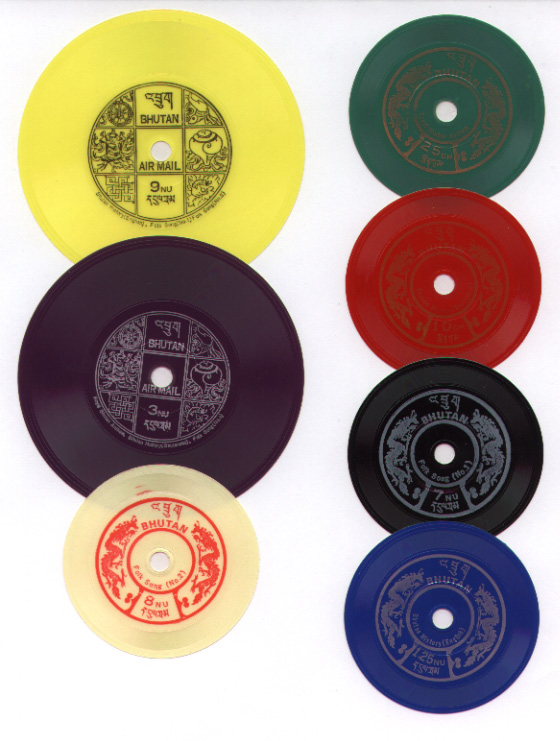
During the
Boer War of 1899-1902, the town of
Mafeking was besieged by the Boers over a period of 217 days, and successfully defended by British forces commanded by
Lieutenant General Robert Baden-Powell. Greatly outnumbered by enemy forces, Baden-Powell bolstered his troops by forming the Mafeking Cadet Corps, a group of boys aged 12 to 15, to act as messengers and orderlies. The Cadet Corps was later to be one of the inspirations for the
Scouting movement, which Baden-Powell founded in 1907.
Mail delivery was among the tasks performed by the Cadet Corps, and since inventories of postage stamps had been depleted during the Siege, stamps of the Cape of Good Hope and the Bechuanaland Protectorate were surcharged, and new stamps picturing 12 year-old Sergeant Major Goodyear (later considered the "First Boy Scout") and Baden-Powell himself were locally produced.
All of the stamps of the Siege of Mafeking Issues (Scott #162-180) are scarce to rare, and both fake overprints and forgeries exist, so expertization should be a condition for purchase. I've listed the stamps, along with quantities issued and Scott '10 Catalog Values, below:
Stamps of Cape of Good Hope surcharged:
#162 1p on 1/2p Green (7,680; $ 240.00 unused, $ 77.50 used)
163 1p on 1/2p Green (5,280; $ 300.00 unused, $ 90.00 used)
164 3p on 1p Rose (6,000; $ 275.00unused, $ 60.00 used)
165 6p on 3p Red Violet (840; $ 42,500.00 unused, $ 300.00 used)
166 1sh on 4p Pale Olive Green (1,440; $ 8,000.00 unused, $ 425.00 used)
Stamps of Bechuanaland Protectorate Surcharged:
167 1p on 1/2p Vermilion (6,000; $ 240.00 unused, $ 77.50 used)
168 and 173 3p on 1p Lilac ( 1,800 total; 168: $ 1,000.00 unused, $ 105.00 used; 173: 1,050.00 unused, $ 90.00 used)
169 and 174 6p on 2p Green and Carmine (1,200 total ; 169: $ 2,250.00 unused, $ 90.00 used; 174: $ 1,300.00 unused, $ 90.00 used )
170 6p on 3p Violet on yellow (1,440; $ 2,250.00 unused, $ 90.00 used)
171 6p on 3p Violet (3,600; $ 450.00 unused, $ 80.00 used)
172 1sh on 4p Brown and Green (2,320; $ 1,650.00 unused, $ 95.00 used)
175 1sh on 6p Violet on rose (1,440; $ 7,250.00 unused, $ 105.00 used)
176 1sh on 6p Violet on rose (240; $ 55,000.00 unused, $ 900.00 used)
177 2sh on 1sh Green (570; $ 14,500.00 unused, $ 500.00 used)
Locally Printed Issue:
178 1p Blue on blue (9,476; $ 1,000.00 unused, $ 425.00 used)
179 3p Blue on blue, 18 1/2mm wide (6,072; $ 1,400.00 unused, $425.00 used)
180 3p Blue on blue, 21 mm wide (3,036; $ 10,750.00 unused, $1,500.00 used)
In 2007, Boy and Girl Scouts and Guides numbered 38 million members in 216 countries worldwide. Scouting Topical stamps are extremely popular internationally. The stamps of the Siege of Mafeking were the first such produced, and will remain key items within any Scouting collection. I strongly recommend purchase of these scarce stamps, conditional on obtaining expertization.


 ading to the establishment of two rival pigeongram companies, each of which issued stamps. The birds were sent over to the island on the weekly steamer, and then flew back to Auckland with up to 5 small messages attached to each bird's legs. Great Barrier's pigeongram service ended when the first telegraph cable was laid between the island and the mainland in 1908.
ading to the establishment of two rival pigeongram companies, each of which issued stamps. The birds were sent over to the island on the weekly steamer, and then flew back to Auckland with up to 5 small messages attached to each bird's legs. Great Barrier's pigeongram service ended when the first telegraph cable was laid between the island and the mainland in 1908.

























































